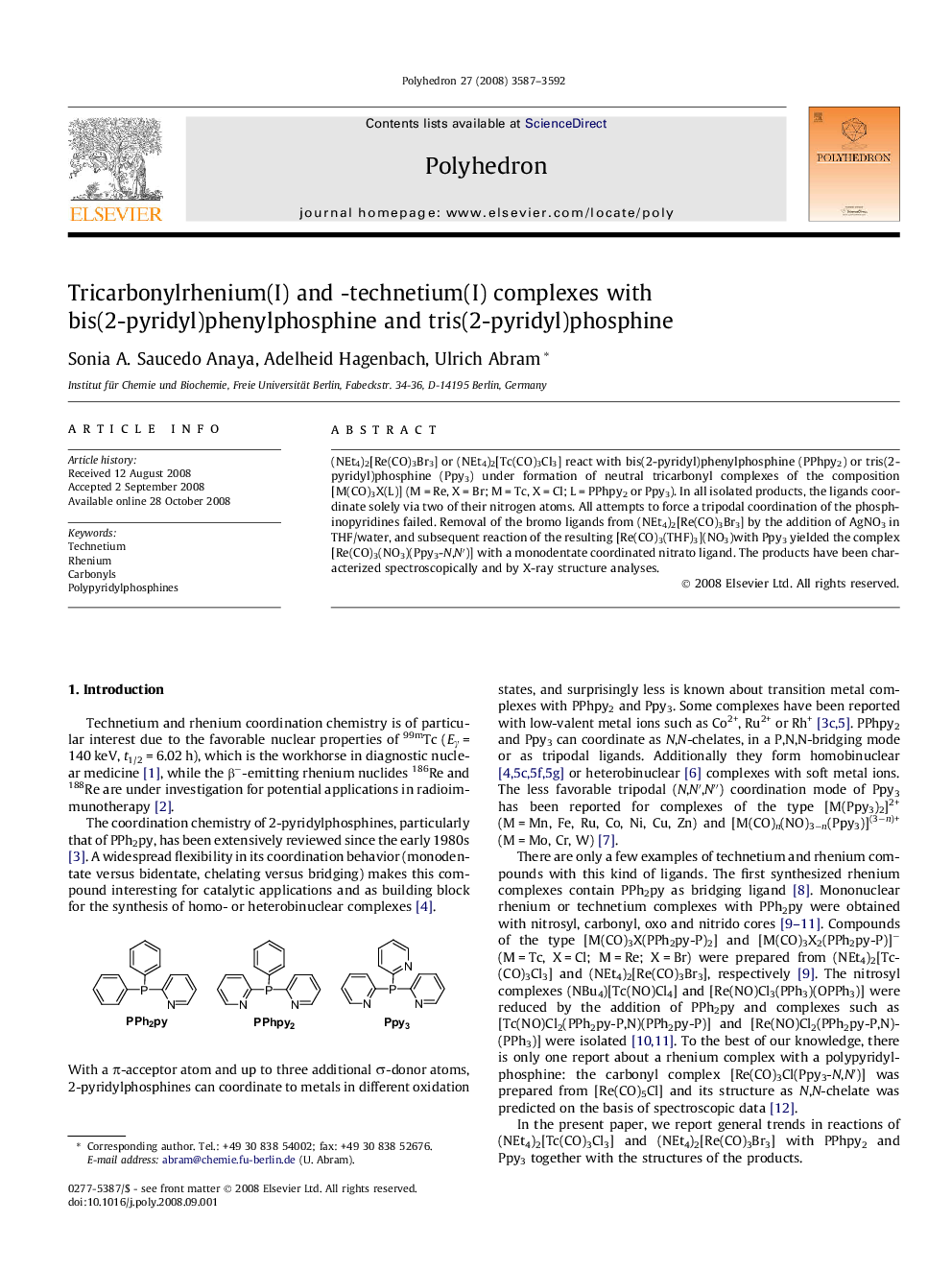| Article ID | Journal | Published Year | Pages | File Type |
|---|---|---|---|---|
| 1335250 | Polyhedron | 2008 | 6 Pages |
(NEt4)2[Re(CO)3Br3] or (NEt4)2[Tc(CO)3Cl3] react with bis(2-pyridyl)phenylphosphine (PPhpy2) or tris(2-pyridyl)phosphine (Ppy3) under formation of neutral tricarbonyl complexes of the composition [M(CO)3X(L)] (M = Re, X = Br; M = Tc, X = Cl; L = PPhpy2 or Ppy3). In all isolated products, the ligands coordinate solely via two of their nitrogen atoms. All attempts to force a tripodal coordination of the phosphinopyridines failed. Removal of the bromo ligands from (NEt4)2[Re(CO)3Br3] by the addition of AgNO3 in THF/water, and subsequent reaction of the resulting [Re(CO)3(THF)3](NO3)with Ppy3 yielded the complex [Re(CO)3(NO3)(Ppy3-N,N′)] with a monodentate coordinated nitrato ligand. The products have been characterized spectroscopically and by X-ray structure analyses.
Graphical abstract(NEt4)2[Re(CO)3Br3] or (NEt4)2[Tc(CO)3Cl3] react with bis(2-pyridyl)phenylphosphine or tris(2-pyridyl)phosphine under formation of neutral tricarbonyl complexes of the composition [M(CO)3(halide)(phosphine)]. The ligands coordinate solely via two of their nitrogen atoms. A reaction of [Re(CO)3(THF)3](NO3) with Ppy3 yielded the complex [Re(CO)3(NO3)(Ppy3-N,N′)] with a monodentate coordinated nitrato ligand.Figure optionsDownload full-size imageDownload as PowerPoint slide
